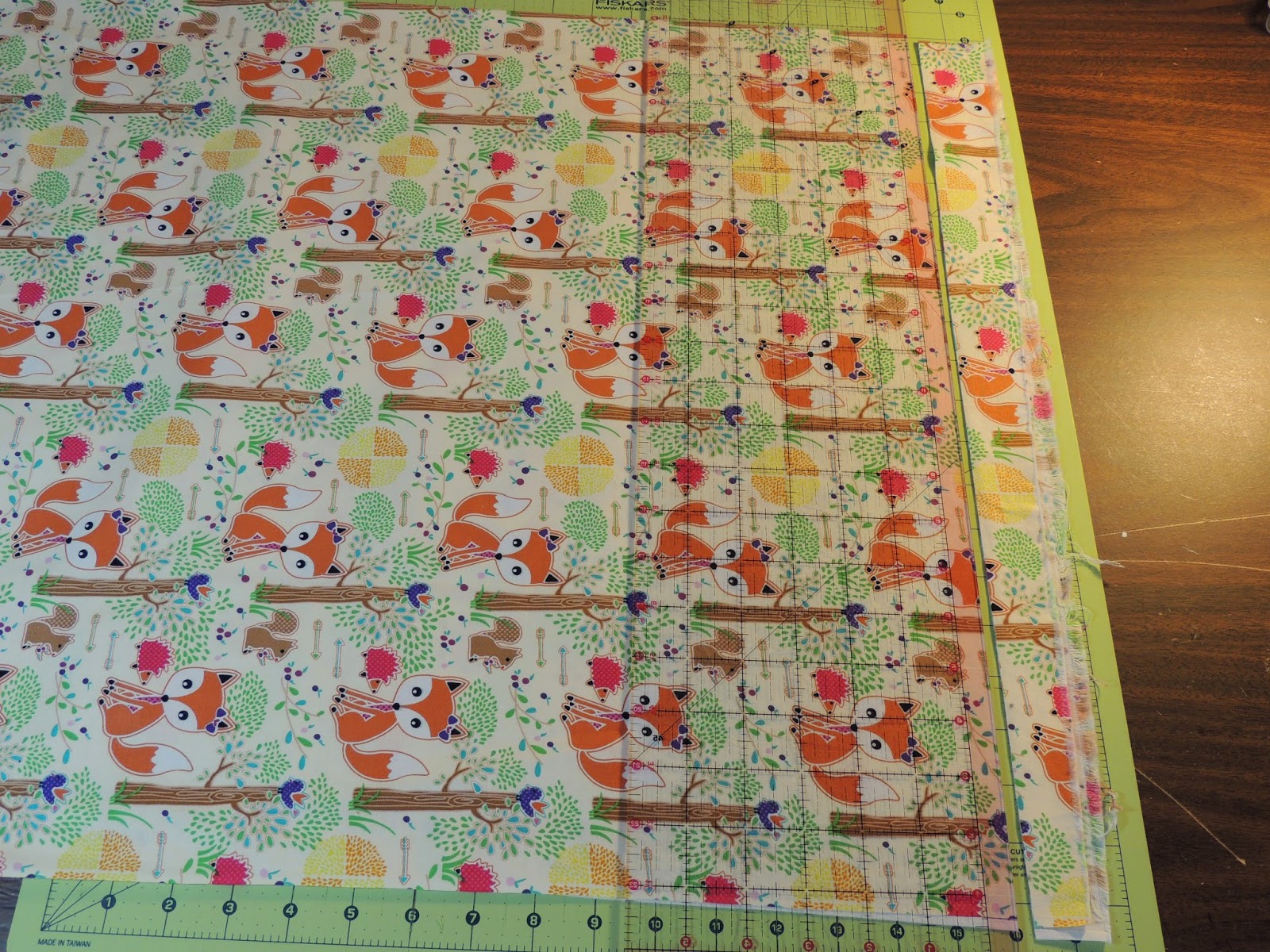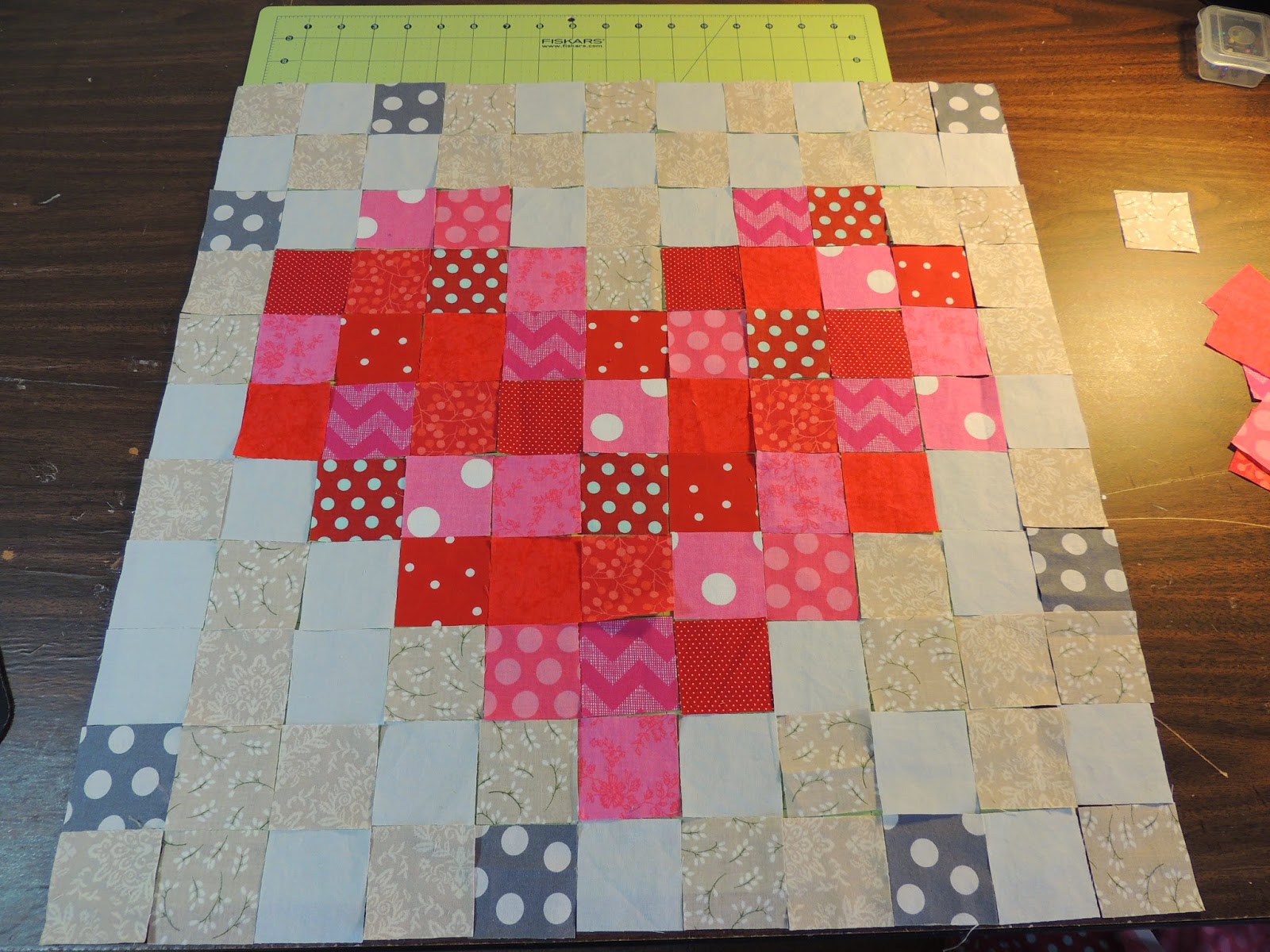Now cut your band pieces. By folding your fabric you can cut your width, then cut that piece in the lengths you need.
Cut your ties in the width you need, then cut the lengths you need. If you want longer ties and a bigger bow, add a few to several inches to your length.
Now prepare the band to be sewn to the bottom of the dress. Fold in half with "right" sides out, matching the sides and raw edges and iron. Repeat with the other band.
Now turn the panel you are sewing the band to upside down. Line the raw edges of the band with the raw edge and sides of the dress. Pin across the bottom.
Now sew the band to the panel with a 1/2 inch seam.
Remove your pins and keeping the band flipped up, zig zag stitch all the way across the band staying close to the edge. This will help prevent fraying.
Iron the band, making sure you iron the seam where you just sewed up towards the dress not down. Repeat with the other panel and band.
Now lay your two dress pieces down, right sides facing each other, so you are looking at the back on the top piece. Make sure they are lined up on all sides. Find the measurements for the arm holes for your size, make a mark at those points, then lay your ruler across touching those 2 points and cut. Repeat with the other side.
Now turn the armholes under 1/4 inch and iron, then turn under 1/2 inch again and iron.
Now sew just inside the edge of the fold from the top of the armhole fabric to the bottom. Repeat for the other 3 sides.
Now your bands and armholes are done!
Now lay your two dress pieces down, right sides facing, line up the sides and pin the sides only.
Sew the sides of the dress using a 1/2 inch seam allowance, then do a zig zag stitch close to the edge all the way down. You should catch the bottom sides of the armhole when you sew the sides.
Now you need to topstitch. Open your dress, right sides out, and place the bottom of the dress on your machine so that you can "roll" the dress around as you stitch. You will be stitching just above the band on your dress, making sure the band seam is still pointed up.
Now the casing. Turn one of the top edges of your dress under 1/4 inch to the inside and press, then turn under 1 1/4 inch and press again, then pin. Repeat with the other side.
Now stitch across the long edge, staying just inside the edge you folded under. Do not sew the sides closed, that's where your ties will go through. Repeat for your other side.
You can get very excited because we're almost through! If you prefer large grosgrain ribbon for your ties, go to the step below for putting your ties in the casing, and when you cut and insert them, you're done! For fabric ties, lay one of the ties down and fold in half with right sides facing on the inside. Make sure your sides are even and press.
Now sew with a 1/4 inch seam allowance starting on one short end, turn,then come down the long side and stop at the bottom leaving the other short end open for turning. Pull as much fabric as you can out of the open end. When you get an inch or so out, take something that isn't sharp, like my dowel with a flat end, and use it to push the fabric out. When all of the fabric is out, insert the dowel and push out the corners on the end and push out your side seams.
Now turn the raw end of the open end to the inside about 1/4 inch. Lay your tie down, making sure the seam runs down one side on the outside and press. Now sew around all four sides close to the edges. Repeat for your other tie.
Now attach a safety pin to one end of a tie. Use the safety pin to push the casing from one side of a panel to the other side of that panel. Pull the excess fabric to the middle of the casing so it "gathers."Repeat for the other panel.
Your pillowcase dress is done! The more you make, the faster you will get. I hope your recipient loves her dress. Here's a few more I've made. I've had a lot of fun with these.

Gina



























































